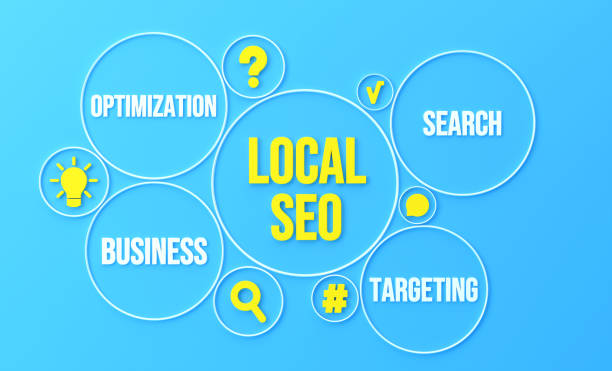Are you looking to create content that not only captures your audience’s attention but also ranks well in search engines? Have you ever wondered why some articles seem to get more clicks, shares, and comments while others don’t? The answer lies in SEO—Search Engine Optimization. But it’s not just about ranking higher on Google; it’s also about crafting content that connects with your audience and keeps them coming back. The good news is, crafting SEO-friendly content for maximum engagement isn’t as difficult as it might seem.
It involves a mix of smart strategies, understanding user intent, and writing in a way that’s both engaging and optimized for search engines. In this blog post, we’ll walk through exactly how to create SEO-friendly content that appeals to both search engines and human readers, ensuring your content stands out and generates meaningful engagement.
What Is SEO-Friendly Content?
SEO-friendly content is simply content that’s optimized for search engines, making it easier for your target audience to find it online. But it goes beyond just inserting a few keywords into your writing. True SEO-friendly content is well-structured, easily readable, and designed to answer the questions your audience is searching for.
When your content is SEO-friendly, it’s more likely to appear higher in search results. But that doesn’t mean you should sacrifice quality for optimization. Great SEO content balances technical aspects with a human touch—because in the end, it’s the readers who engage with and share your content.
Why Should You Focus on Engagement?
Engagement is one of the most important indicators of content success. After all, when people engage with your content—whether it’s through likes, shares, comments, or time spent on the page—it signals to search engines that your content is valuable and relevant.
But why does engagement matter to you? Higher engagement means more visibility, which can result in more traffic, better brand awareness, and even higher conversion rates. Additionally, when your content resonates with your audience, they’re more likely to return to your website, share your posts with others, or become loyal customers.
Understanding Your Audience and Their Search Intent – SEO-Friendly Content
Before diving into writing SEO-friendly content, it’s crucial to understand who your audience is and what they’re looking for. When users type a query into a search engine, they have a specific intent behind their search. Are they looking for information? Are they trying to make a purchase? Or are they seeking solutions to a problem?
Keyword research is the first step in understanding search intent. By researching and identifying the keywords your target audience is using, you can tailor your content to meet their needs. For example, if someone searches for “how to improve SEO for my website,” they are likely looking for actionable advice, not just a general overview. Understanding this allows you to create content that provides exactly what they’re looking for.
Crafting Compelling, SEO-Friendly Content Headlines
Your headline is the first thing people see, both in search results and on your site. It plays a crucial role in whether they’ll click on your content or scroll past it. To ensure your headline works for both SEO and engagement, make it:
- Clear and Concise: Let readers know what they’ll get from your content.
- Use Keywords: Incorporate relevant keywords for SEO without overstuffing them.
- Compelling: Create curiosity or provide a solution to the reader’s problem.
For example, instead of a generic headline like “SEO Tips for Your Website,” you could go with something more engaging like, “10 Proven SEO Tips to Skyrocket Your Website’s Rankings and Engagement.”

Using Keywords Naturally – SEO-Friendly Content
One of the biggest challenges of creating SEO-friendly content is incorporating keywords naturally. If you stuff your content with too many keywords, it can negatively affect readability and even lead to penalties from search engines. Instead, focus on keyword placement and context.
- Primary Keywords: Place your main keywords in key areas like the title, introduction, and subheadings. However, don’t force them into every sentence.
- Long-Tail Keywords: Use longer, more specific phrases that reflect user queries. These keywords are often less competitive and can bring in highly-targeted traffic.
- LSI Keywords: Latent Semantic Indexing (LSI) keywords are related terms that help search engines understand the context of your content. For example, if you’re writing about SEO, LSI keywords might include “content optimization,” “search rankings,” and “keyword research.”
The goal is to make your content flow naturally and avoid keyword stuffing. It should still sound like a conversation with your reader, not a robotic SEO attempt.
Structuring Your Content for Readability and SEO
Good content structure isn’t just about making your writing more readable—it’s also about ensuring search engines can easily crawl your page. Here’s how you can improve the structure of your content:
- Use Headings and Subheadings: Break your content into sections with descriptive headings (H2, H3, etc.). This makes it easier for readers to scan your post and for search engines to understand its main topics.
- Short Paragraphs: Keep your paragraphs short and easy to digest. Big blocks of text can overwhelm readers and reduce engagement.
- Bullet Points and Lists: These are perfect for summarizing key points and making your content skimmable. Readers tend to scan for important information, and lists provide that in a format that’s easy to follow.
- Internal and External Links: Including internal links to other relevant pages on your site helps readers find additional useful content, and external links to authoritative sources build trust. Both also play a role in SEO.
By organizing your content with clear headings, short paragraphs, and useful links, you make it easier for your audience to stay engaged, which can lead to longer page visits.
Creating Engaging, Valuable Content – SEO-Friendly Content
It’s essential to remember that SEO alone isn’t enough. Your content must add value to the reader. If your content doesn’t answer their questions or provide them with new insights, they won’t stick around, no matter how well it’s optimized.
To create truly engaging content:
- Be Informative: Provide real, actionable advice that helps your readers solve a problem or answer a question.
- Use Visuals: Incorporate images, infographics, and videos where appropriate. Visuals can increase engagement and help break up the text, making it more appealing.
- Write in an Approachable Tone: Whether you’re writing for a corporate audience or casual readers, make your content easy to understand. Avoid jargon unless it’s necessary, and keep your tone conversational yet professional.
- Tell Stories: People love stories. Whether it’s a customer success story or a case study, stories can make your content more relatable and memorable.

Optimizing for Mobile Users
With more than half of web traffic coming from mobile devices, optimizing your content for mobile users is crucial. Ensure that your website is mobile-friendly, meaning it loads quickly, is easy to navigate, and displays properly on smaller screens.
In terms of content, make sure your text is readable without zooming, your images are optimized for mobile devices, and your links and buttons are easy to click.
Monitoring and Improving Your SEO Strategy – SEO-Friendly Content
The work doesn’t end once your content is live. Regularly monitor your performance and adjust your strategy based on your results. Use tools like Google Analytics to track metrics such as:
- Organic Traffic: How many people are finding your content through search engines?
- Bounce Rate: Are visitors leaving quickly, or are they engaging with multiple pages on your site?
- Click-Through Rate (CTR): Are users clicking on your page from search results?
Based on this data, you can adjust your content, keywords, and strategies to further improve engagement and SEO performance.
Conclusion: Create SEO-Friendly Content That Engages Your Audience
Crafting SEO-friendly content isn’t just about pleasing search engines—it’s about creating valuable, engaging content that resonates with your audience. By focusing on user intent, using keywords naturally, structuring your content effectively, and providing real value, you can create content that not only ranks but also encourages readers to engage, share, and return.
Remember, SEO and engagement go hand in hand. When you create content that people love and search engines reward, you’re setting your website up for long-term success. Keep experimenting, refining your approach, and watch your engagement grow!
By following these strategies, you’ll be well on your way to crafting SEO-friendly content that doesn’t just attract traffic, but also keeps your audience engaged. Keep learning, and stay committed to creating the best content possible.








